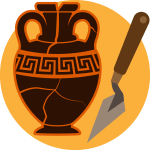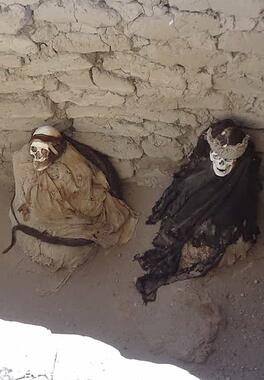The Person Behind the Mummy
In Peru, mummies were “bundled” in a crouching position.
Often, a false head, clothes, and other objects were added to the outside of the bundle to represent the person within. These objects sometimes reflected the person’s work and gender.
For example, mummies from the Chancay society near the Pacific Coast were often found with fishing nets. A Chancay woman wrapped in homemade fabric with looms and weaving tools may have been a master weaver.
Farther from the coast, a Nazca (AD 0 to 600) man buried with a sling that was used for protecting livestock may have been a herder




 Biodiversity
Biodiversity
 Brain
Brain
 Genetics
Genetics
 Marine BiOLogy
Marine BiOLogy
 MicrobiOLogy
MicrobiOLogy
 PaleontOLogy
PaleontOLogy
 ZoOLogy
ZoOLogy
 AnthropOLogy
AnthropOLogy
 ArchaeOLogy
ArchaeOLogy
 Astronomy
Astronomy
 Climate Change
Climate Change
 Earth
Earth
 Physics
Physics
 Water
Water


